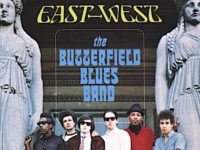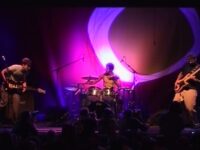Never been a big Western fan – mostly because of the cowboy: Ol’ leatherface. If the Western had been exclusively populated by Native American Indians and cowgirls, I’d have been a huge fan.
Instead, we had these arid rock-hewn okes with their dusty shirts and dustier personalities, their clickety boots and ghost towns and morose, ever-ready pistols. And horses named Rusty, and that confounded bar sign wip-wapping in the Hollywood breeze.
Then Sergio Leone barged into the saloon, injected a healthy dose of nihilism and mythology into proceedings, and rendered the Western in a new light. Leone took key elements from the genre’s canon and reimagined the cowboy as an amoral loner: Quasi-human, a man of few words and no airs. In the young, stubbled squint of Clint Eastwood he found his anti-hero – the Man with No Name.
Himself an outsider, Leone’s genuine love for the West did not obscure his knowledge that this was a brutal place. Unlike Americans and their Disney-fication of their history, Leone knew the West had effectively been built on genocide, and that this crimson knowledge had pumped through the veins of rangers, pioneers and frontiersmen.
The West was no Sunday picnic. It was an unforgiving space populated by heinous acts and the acrid smell of desperation. You get what you can take.
His Eastwood trilogy made the Western cool again: There was an honesty to Sergio Leone’s dubious heroes which resonated with a ’60s America sick of political deceit and the white-washed atrocities of Vietnam. His cinematic rhythm was dirty and funky, almost as funky as the sombreros favored by his leads.
Leone set said nameless stranger on three adventures, as Eastwood went pillaging, conning and killing his way through A Fistful of Dollars, For a Few Dollars More and (at the time, the very definition of the Spaghetti Western) The Good, the Bad, and the Ugly. Leone had a talent for casting faces: If his films were sparse in dialogue, it was because his characters’ facial features spoke volumes.
This talent inspired Sergio Leone to cast America’s hero – the sky blue-eyed Henry Fonda – as the sinister villain in Once Upon a Time in the West. Italian partner-in-crime and former schoolmate Ennio Morricone’s musical contributions became more marked over time, eventually stepping right up to the camera like a main character.
Between the two of them they recreated a genre. As avant-garde as the most experimental jazz of the time, Morricone’s scores warped and bled, hacked and coughed, evolving at frightening rates, becoming indispensable to Leone’s characters and scenes, and to his oeuvre.
By 1967, Leone had said what he’d wanted to say. He was done with the West, but the West wasn’t done with him. So he decided to kill it off. In the liner notes to the DVD collector’s edition of Once Upon a Time in the West, Leone explains that he was ready to begin exploring the new warriors and henchmen of America – the Irish and Italian gangs that had built and razed and rebuilt her cities – a new horizon that would be richly mined by the likes of Martin Scorcese and Francis Ford Coppola. (Leone would eventually follow with Once Upon a Time in America.)
Roping in the unlikely pair of Dario Argento (Suspyria) and Bernardo Bertolucci (Last Tango in Paris) to collude on the script, Leone conceived of a symbolic mechanism to sound the funeral bell: The railroad. The West would be destroyed by what it had given birth to – modernization, capitalism.
This future would be epitomized in the gorgeous form of Claudia Cardinale, and those epically lush lashes of hers. For Sergio Leone, the West was home to what he called “an ancient race, the race of men.” But technology and modern evolution was a feminine one – subtler and more sophisticated in its hungers.
Watching Once Upon a Time in the West again, I was literally overwhelmed. The opening sequence, a masterfully building tension, already knocks the ball out of the park. Ennio Morricone’s work is revolutionary, unprecedented, at times almost stealing the show.
Rewatch the opening sequence with eyes closed, and you (re)discover a six-minute composition of found-sounds: Dripping and splashing water; a rusty windmill; the unhinged telegraph machine; a howling train and, ingeniously, a rowdy fly.
He conducts the entrails, the very living space the characters inhabit, as his orchestra. Throughout, he ushers every main character on and off screen via signature musical motifs, from Cheyenne’s stumblingly upbeat banjos, to Harmonica’s wheeze of death, to demented villain Henry Fonda’s tango death-rock guitars – all three interlocking and twining around each other as the characters square off.
“This,” as a reviewer from London’s Time Out Film Guide once quite appropriately gushed, “is cinema.”
[First published in Muse magazine.]
- How the Pixies Changed Everything With ‘Surfer Rosa’ - July 12, 2023
- Frank Zappa – ‘Funky Nothingness’ (2023) - June 30, 2023
- How Jim White’s ‘Wrong-Eyed Jesus!’ Changed My Mind About Country Music - June 14, 2023




